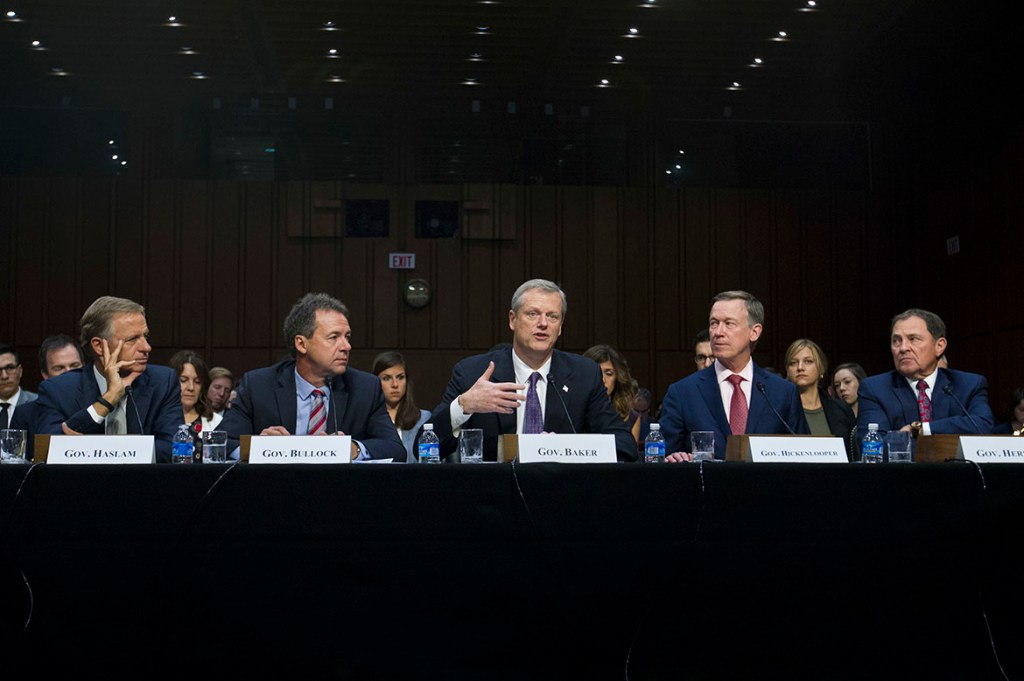Sen. Lamar Alexander (R-Tenn.) has a problem — and not much time to solve it.
The chairman of the Senate Health, Education, Labor and Pensions (HELP) Committee wants to turn the page on the divisive health debate of this summer. He’s been working with the panel’s top Democrat, Patty Murray (D-Wash.), to craft a bipartisan bill aimed at shoring up the individual health insurance market.
Alexander has been looking at a proposal that would please Democrats (and insurance companies) by funding contested subsidies that help moderate-income policyholders pay their out-of-pocket health costs. To please Republicans, he has been pushing a plan to give states more flexibility to set up “reinsurance” pools that would help bring down premiums by limiting insurer exposure for the most expensive patients.
And he has to get the job done with only a handful of legislative days in September before insurers must make final decisions on 2018 coverage.
Alexander may have an impossible task ahead of him if his committee’s hearings over the past two days are an indication.
A bipartisan succession of state governors and insurance commissioners told the committee that there is no time for them to get their own reinsurance programs up and running in order to stabilize the market. What would help in the short term, they said, would be for the federal government to step in and do it — temporarily. “For the first year, you’re going to have to have the federal government help on that,” said Gov. Bill Haslam (R-Tenn.).
But a clearly frustrated Alexander said at the end of Thursday’s hearing that he couldn’t pass that kind of bill. “To get a Republican president, House and Senate to vote for just more money isn’t going to happen in the next two or three weeks,” he said.
That, however, did not convince the governors, who said this money was essential in stabilizing the markets.
“One of our great challenges is to get more people participating in the system; a reinsurance pool is one of the best ways to do that,” said Gov. John Hickenlooper, a Democrat from Colorado.
He and Haslam were echoed by Massachusetts Gov. Charlie Baker and Utah Gov. Gary Herbert, both Republicans; and Montana Gov. Steve Bullock, a Democrat.
Reinsurance provides money to insurers for the sickest and highest-cost consumers. Governors testified that reinsurance would lower premiums, thereby bringing young, healthy people into the risk pool and providing stability to the marketplace.
Alexander has been a proponent of states setting up their own reinsurance pools by applying for exemptions from the Affordable Care Act’s rules to innovate in their markets. So-called Section 1332 waivers are permitted as long as they don’t cost the federal government more money or cover fewer people. He asked in his opening remarks if there was a way to reform the clunky 1332 process to allow states to create their own reinsurance pools.
“Whether it’s reinsurance or an invisible high-risk pool or a stabilization fund — we need to think about what the state share of that should be,” Alexander said.
As written, the health law makes it impossible for states to get waivers for reinsurance pools that could be up and running in time for 2018 enrollment. The waivers require state legislation and six-month waiting periods for final federal approval. The ACA created a federal reinsurance program that ran for three years, expiring in 2016.
Bullock said the federal reinsurance pool lowered premiums by 10 to 15 percent in 2014.
Sen. Maggie Hassan (D-N.H.), a former governor of her state, supported using federal dollars to help states set up their reinsurance programs.
“At least some of the seed money should come from the feds, because the feds are going to save money if they put in place a reinsurance program and premiums go down,” Hassan said.
Without reinsurance, the federal government’s costs for premium subsidies will rise as premiums increase.
But Sen. Chris Murphy (D-Conn.) said it was unlikely that a federal reinsurance program would be ready in time to affect 2018 premiums.
“I think we’re on a really tight time frame,” Murphy said after the hearing. “Whatever enthusiasm exists in the Senate for a federal reinsurance program might not exist in the House.”
Every governor in attendance also advocated for the extension of cost-sharing reduction payments to insurers for at least two years. Those payments, estimated at $10 billion for 2018, reimburse insurers for discounts given to low-income consumers. They are being funded on a month-to-month basis by the Trump administration.
Some Republican senators have denounced both cost-sharing payments and reinsurance as “insurance company bailouts,” but both the governors and the insurance commissioners told the committee that funding them is essential to keep insurers participating in the Obamacare marketplaces next year and prevent a spike in premiums.
Two more HELP Committee hearings are set for next week, on Tuesday and Sept. 14 — the first with health care experts and the second with a mixed panel including doctors and patient advocates. Alexander said Thursday that he wants to reach a consensus about stabilizing the individual health market by the end of next week and pass legislation before the end of September. That is when insurers need to submit their 2018 rates to state insurance regulators.
This story was produced by Kaiser Health News, an editorially independent program of the Kaiser Family Foundation.


